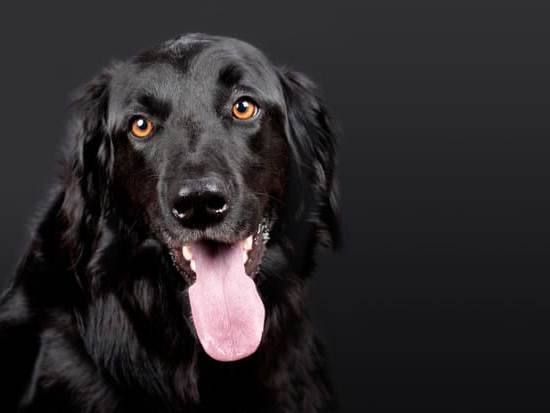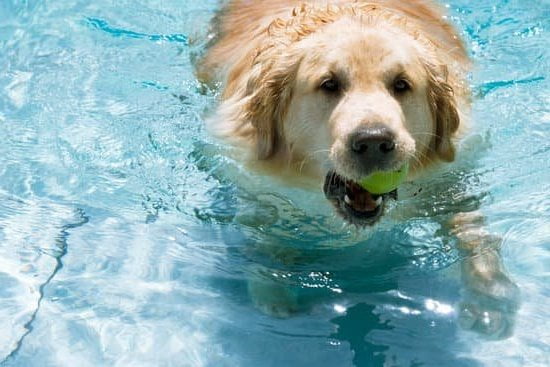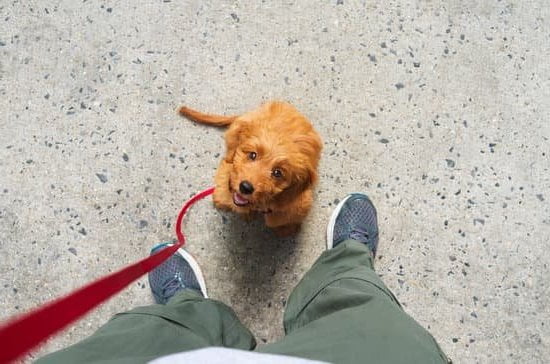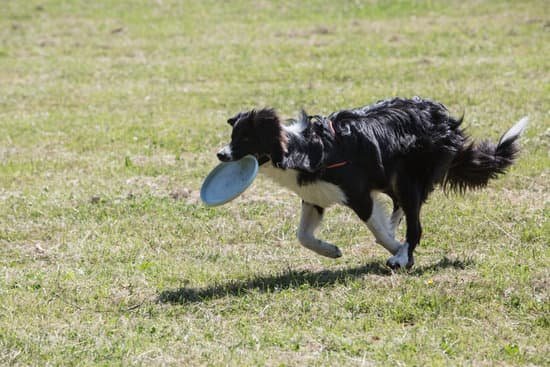Is your furry friend exhibiting aggressive behavior on a leash? Training an aggressive dog on a leash can be challenging, but it is not impossible. Understanding the root of aggression in dogs is the first step in addressing this issue and creating a safe and enjoyable walking experience for both you and your pet.
Aggression in dogs can stem from various sources, such as fear, territorial behavior, or past traumatic experiences. Recognizing the signs of aggression on a leash is crucial in addressing the problem effectively. By understanding your dog’s triggers and body language, you can better navigate the training process and find the most suitable approach to address the behavior.
Proper equipment plays a vital role in training an aggressive dog on a leash. From choosing the right collar and leash to utilizing tools like muzzle or head halter, having the appropriate gear ensures both safety and control during training sessions. Establishing strong leadership and trust with your dog is also essential in managing their aggressive behavior. Through consistent guidance and positive reinforcement techniques, you can build a strong bond with your furry companion while addressing their aggression issues.
Recognizing Signs of Aggression on a Leash
When it comes to training an aggressive dog on a leash, the first step is to be able to recognize the signs of aggression. This includes growling, barking, lunging, or showing teeth when approached or in certain situations. It’s important to understand that these behaviors are often rooted in fear, anxiety, or a perceived threat. By being able to identify these signs early on, you can take appropriate measures to address the issue and prevent any potential negative incidents.
In addition to the obvious signs of aggression, there may also be more subtle indications such as rigid body language, raised fur along the back, or staring intently at another dog or person. These signs can often precede more overt displays of aggression and should not be ignored. By being vigilant and observant while walking your dog on a leash, you can anticipate and address any potential issues before they escalate.
It’s also crucial to consider the environment when trying to recognize signs of aggression on a leash. Your dog may react differently in various settings such as busy streets, parks, or around other animals. Being aware of your surroundings and understanding how they may impact your dog’s behavior is essential for successful leash training. Remember that every dog is different and may have unique triggers for their aggressive behavior.
| Signs of Aggression | Example |
|---|---|
| Growling | Your dog snarls and shows its teeth when approached by another dog. |
| Lunging | Your dog pulls aggressively towards other dogs or people while on a walk. |
| Raised Fur | Your dog’s fur stands up along its back when feeling threatened. |
Proper Equipment for Training an Aggressive Dog on a Leash
When it comes to training an aggressive dog on a leash, having the proper equipment is essential for both the safety of the dog and the handler. Without the right gear, leash training can be challenging and even risky. In this section, we will discuss the necessary equipment needed for training an aggressive dog on a leash.
Sturdy Leash and Collar
A sturdy leash and collar are crucial when it comes to training an aggressive dog. For larger and stronger dogs, a thick and durable leash is recommended to ensure that it can withstand their strength. Additionally, using a secure, well-fitted collar or harness is important to maintain control over the dog without causing discomfort or injury. Using a double-handled leash can also provide added security and control during training sessions.
Muzzle
In cases of extreme aggression, using a muzzle during leash training is imperative for the safety of both the dog and others. A properly fitted muzzle allows the handler to have more control over the dog in potentially high-stress situations while ensuring that no one gets harmed. Introducing a muzzle to an aggressive dog should be done gradually and with positive reinforcement to prevent any negative associations with wearing it.
Treats and Toys
In addition to physical equipment, having treats and toys on hand during leash training can be beneficial in redirecting an aggressiveness towards positive behaviors. Treats can be used as rewards for good behavior during walks, while toys can serve as distractions when encountering triggers that may cause aggression in your dog. Positive reinforcement through treats and toys can help create positive associations with being leashed and walking in public spaces.
Knowing how to train an aggressive dog on a leash involves not only understanding your dog’s behavior but also having the appropriate equipment at your disposal. With the right tools, you can better manage your dog’s aggression while keeping both your pet and those around them safe during walks.
Establishing Leadership and Trust
One of the most important aspects of training an aggressive dog on a leash is establishing yourself as the leader in your relationship with your pet. Dogs are pack animals and they respond well to knowing their place in the hierarchy. By showing your dog that you are the leader, you can help to alleviate feelings of insecurity and fear that may be causing their aggression.
Building Trust
Building trust with an aggressive dog takes time and patience, especially if they have a history of abuse or neglect. It’s important to approach them calmly and confidently, without showing any fear or hesitation. Use gentle, soothing tones when interacting with them and avoid making sudden movements that could startle or provoke them. Building trust also involves creating a predictable routine for your dog so that they can anticipate what to expect from you.
Leadership Training
In order to establish yourself as the leader, it’s essential to assert your authority over your dog in a firm but loving manner. This means setting clear boundaries and rules for behavior that are consistently enforced.
For example, make sure your dog understands that they must sit before being given their food or treats, walk next to you on a loose leash, and not jump up on people. Consistency is key when it comes to leadership training as any inconsistency can cause confusion for the dog.
By incorporating these techniques into your aggressive dog’s leash training regimen, you can begin to establish a strong foundation of trust and leadership. Remember, building trust and establishing yourself as the pack leader takes time and patience – but it will be well worth it in the end when you see your once-aggressive dog walking calmly by your side.
Positive Reinforcement Techniques for Leash Training
When it comes to leash training an aggressive dog, positive reinforcement is crucial for shaping their behavior in a more desirable direction. Positive reinforcement involves rewarding your dog for displaying the desired behavior, which can be particularly effective in encouraging good leash manners. Rewards can range from treats and verbal praise to physical affection, and this technique can be especially beneficial for dogs with aggressive tendencies.
One effective way to use positive reinforcement during leash training is through clicker training. This method involves using a small handheld clicker device that makes a distinct sound, which you can use to mark the moment when your dog exhibits the desired behavior. You then follow up with a treat or praise, associating the sound of the clicker with a positive reward.
It’s important to note that timing is crucial when using positive reinforcement techniques. The reward should be given immediately after the desired behavior occurs so that your dog understands what they are being rewarded for. With consistent and timely rewards, your dog will learn to associate walking calmly on a leash with positive outcomes, ultimately helping to reduce their aggression while on walks.
| Positive Reinforcement Techniques | Importance |
|---|---|
| Clicker Training | Effective in marking desired behaviors |
| Treats and Verbal Praise | Helps reinforce positive behaviors during leash training |
| Association of Calm Behavior with Positive Outcomes | Assists in reducing aggression during walks |
Desensitization and Counterconditioning
Desensitization
Desensitization involves gradually exposing your aggressive dog to the trigger that causes their aggression in a controlled and safe environment. This exposure should start at a level where the dog shows no signs of aggression and then slowly increase over time. For example, if your dog becomes aggressive around other dogs, you may begin by having them at a distance where they remain calm and gradually decrease the distance as they become more comfortable.
Counterconditioning
Counterconditioning focuses on changing your dog’s emotional response to the trigger from a negative one to a positive one. This is often done by pairing the presence of the trigger with something pleasant for the dog, such as treats or playtime. For instance, every time your dog sees another dog without exhibiting aggression, reward them with a treat to create a positive association with the trigger.
These techniques require careful planning and execution to ensure success. When using desensitization and counterconditioning methods, always prioritize your safety and that of others around you. Remember that seeking professional help is always an option if you feel overwhelmed or unsure about how to train an aggressive dog on a leash effectively.
Implementing Obedience Commands
When it comes to leash training an aggressive dog, implementing obedience commands is crucial for managing their behavior and keeping them under control during walks. Obedience commands help establish boundaries and provide a way for you to communicate with your dog effectively. Here are some key obedience commands to implement when training an aggressive dog on a leash:
- Sit: Teaching your dog to sit on command can help redirect their focus and calm them down when they become agitated or reactive towards other dogs or people while on a leash.
- Stay: The “stay” command is essential for keeping an aggressive dog from lunging or approaching potentially triggering situations while on a walk. It helps to maintain control and prevent any potential confrontations.
- Leave it: This command can be used to redirect your dog’s attention away from distractions or triggers while walking on a leash. It teaches them to ignore things that may cause them to react aggressively.
Incorporating these obedience commands into your leash training routine will not only promote better behavior but also increase safety for both your dog and those around you. However, it’s important to remember that consistency is key when teaching obedience commands, especially for aggressive dogs. With patience and practice, you can help your aggressive dog learn to respond obediently even in challenging situations.
Implementing obedience commands is just one aspect of leash training an aggressive dog – it’s also important to pair these commands with positive reinforcement techniques as part of a comprehensive training plan. Consistency, patience, and the right approach are crucial in ensuring successful results when dealing with aggression on a leash. Remember, seeking professional help when necessary is always an option if you find yourself struggling or dealing with particularly severe aggression issues.
Seeking Professional Help and Support for Aggressive Leash Training
Training an aggressive dog on a leash can be a challenging and potentially dangerous task. If you find that your efforts to train your aggressive dog on a leash are not yielding desirable results, or if you feel overwhelmed by the situation, it may be time to seek professional help. A certified dog trainer or behaviorist who specializes in working with aggressive dogs can provide invaluable support and guidance in addressing your dog’s leash aggression.
When seeking professional help for aggressive leash training, it is important to choose a trainer or behaviorist who has experience and success in working with aggressive dogs. Look for professionals who use positive reinforcement techniques and have a good understanding of canine behavior. Additionally, consider seeking guidance from a veterinary behaviorist who can provide a deeper understanding of any underlying medical or psychological issues contributing to your dog’s aggression.
In addition to working with a professional, seeking support from other dog owners who have experience with leash-aggressive dogs can be beneficial. Joining support groups or online forums dedicated to helping owners of aggressive dogs can provide a sense of community, as well as valuable advice and encouragement from those who have been through similar experiences.
Remember that you are not alone in facing these challenges, and there are resources available to help you navigate the process of training an aggressive dog on a leash.
Consistency and Patience
In conclusion, training an aggressive dog on a leash requires patience, consistency, and understanding. It is important to first understand the root of aggression in dogs and recognize the signs of aggression while on a leash. Proper equipment such as a well-fitted harness and a sturdy leash is essential for safe and effective training.
Establishing leadership and trust with your aggressive dog is crucial. Using positive reinforcement techniques and implementing obedience commands can help in gaining their trust and respect. Consistency in training methods and being patient with the process are key factors in successfully training an aggressive dog on a leash.
It is also important to consider seeking professional help and support when dealing with an aggressive dog. A professional trainer can provide guidance and expertise to effectively train the dog while ensuring safety for both the dog and the handler. With consistency, patience, proper techniques, and professional support, it is possible to train an aggressive dog on a leash successfully.
Frequently Asked Questions
How Do I Stop My Dog From Being Aggressive on the Leash?
One way to stop your dog from being aggressive on the leash is to use positive reinforcement training. Rewarding your dog for calm, non-aggressive behavior can help them associate good things with walking on a leash.
Can Leash Aggression Be Cured?
Leash aggression in dogs can be managed and improved with consistent training and behavior modification techniques. While it may not be “cured” in the traditional sense, it can be effectively controlled.
How Do You Train an Aggressive Dog to Walk on a Leash?
Training an aggressive dog to walk on a leash involves desensitization and counter-conditioning. This means exposing the dog to triggers at a distance where they don’t react aggressively and pairing it with something positive, like treats or praise. Consistency and patience are key in this process.

Welcome to the blog! I am a professional dog trainer and have been working with dogs for many years. In this blog, I will be discussing various topics related to dog training, including tips, tricks, and advice. I hope you find this information helpful and informative. Thanks for reading!





